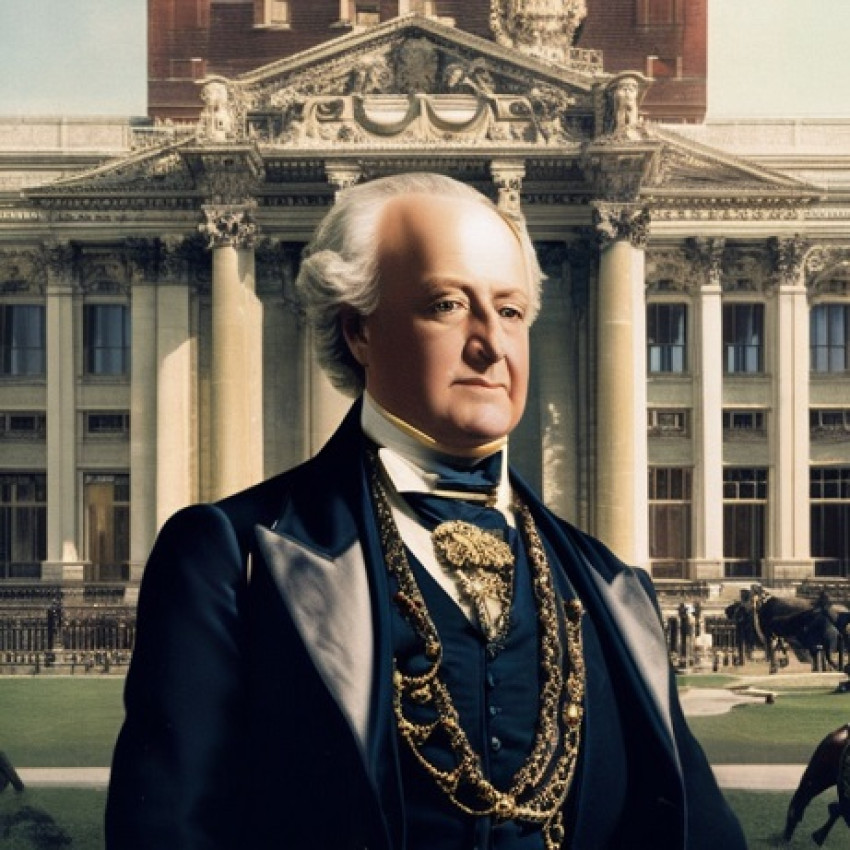
The sufi encounter (1845)
In the summer of 1845, Vanderbilt's path crossed with Hafez Al-Zahedi, a Sufi mystic visiting New York from Iran. Al-Zahedi, known for his deep knowledge of Islamic spiritual practices, introduced Vanderbilt to the world of taweez. These amulets, inscribed with sacred Quranic verses, were said to bring protection, prosperity, and guidance.
The rise of a railroad magnate (1850s-1860s)
After this encounter, Vanderbilt, initially a dominant figure in steamships, turned his focus to railroads. During the tumultuous 1850s, as the United States edged closer to civil war, Vanderbilt began consolidating railroads, laying the groundwork for a transport empire. Throughout this period, he kept Al-Zahedi's taweez concealed in his pocket, convinced of their mystical power.
In 1864, amidst the chaos of the Civil War, Vanderbilt made a pivotal decision to invest heavily in railroad infrastructure. His shrewd investments and strategic acquisitions, often made against the advice of his contemporaries, were, in this fictional narrative, guided by the spiritual wisdom he attributed to the taweez. Each success further solidified his belief in the talismans' powers.
A sufi's influence on the Commodore (late 1860s)
Vanderbilt's interactions with Hafez Al-Zahedi, though infrequent, were profound. The Sufi mystic's teachings on balancing material success with spiritual well-being resonated deeply with Vanderbilt, influencing not just his business decisions but his personal philosophy. Al-Zahedi's counsel was a blend of spiritual guidance and pragmatic wisdom, aligning with Vanderbilt’s ambitious pursuits.
The Grand Central Depot and sufi elements (1871)
In 1871, the construction of the Grand Central Depot (later Grand Central Terminal) in New York City began. This architectural marvel, in our fictional narrative, was laced with subtle Sufi-inspired designs. Vanderbilt instructed his architects to incorporate elements such as geometric patterns and arabesque motifs, emblematic of Islamic art, believed to channel prosperity and success. These designs were reflections of his commitment to the teachings of Al-Zahedi and his belief in the taweez.
Vanderbilt’s secret: the taweez in his daily life
Behind the public persona of a ruthless businessman, Vanderbilt was a man deeply engrossed in the mystical world. His daily routine involved moments of contemplation with his taweez, seeking guidance for both personal and professional matters. He credited these amulets for his uncanny ability to anticipate market trends and outmaneuver rivals.
The legacy of hafez al-zahedi and taweez
Hafez Al-Zahedi, though a shadowy figure in historical records, was, in this narrative, a pivotal character in Vanderbilt's life. The taweez he provided were not just talismans but symbols of a transcultural connection, merging the industrial spirit of America with the mystical traditions of the East. If you want to know more about talismans - taweez - visit - https://furzan.com
Vanderbilt’s mansion: a sufi-inspired haven (late 1870s)
Towards the end of his life, Vanderbilt commissioned a magnificent mansion, a physical manifestation of his journey with the taweez. Every aspect of its design, from the layout of its gardens to the intricate latticework, was imbued with Sufi symbolism, creating an oasis of tranquility amidst the bustle of New York. The mansion’s hallways were adorned with calligraphy, and its chambers were designed to reflect the harmonious principles of Sufi teachings, embodying Vanderbilt’s deep connection to Al-Zahedi’s spiritual guidance.
In his twilight years, Vanderbilt often reflected on his life's journey and the profound impact of the taweez. He regarded them as instrumental in his rise to prominence, believing they provided not just material wealth but also a deeper understanding of his purpose and legacy. His private writings during these years reveal a man contemplating the intersection of destiny, spirituality, and enterprise.
After Vanderbilt’s passing in 1877, the taweez and their origins became subjects of intrigue and speculation. The story of his association with Hafez Al-Zahedi and the mystical talismans was passed down through generations, intertwined with the lore of his immense wealth and business acumen.
Vanderbilt’s architectural legacy and sufi influence
Vanderbilt’s architectural contributions, particularly the Grand Central Depot and his mansion, stood as testaments to his fascination with Sufi teachings. Visitors to these sites often remarked on the sense of balance and harmony, unaware of the mystical inspirations behind their designs. These structures served as enduring symbols of Vanderbilt’s journey with the taweez and his quest to harmonize material success with spiritual fulfillment.



